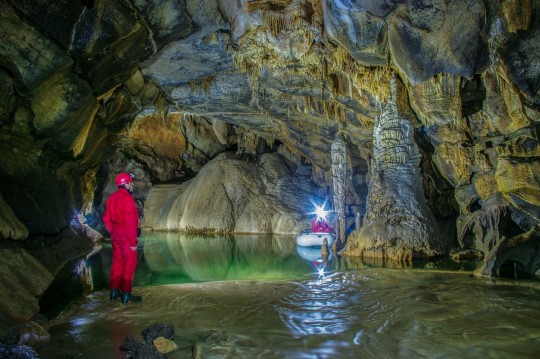The year 2021 is an International Year of Caves and Karst!
What a coincidence that Slovenia is holding the EUSAIR Pro-temporary Presidency just now, isn't it?
According to the Slovenian Speleological Association, there are currently around 10.200 registered karst caves in Slovenia, and about 100 new ones are discovered every year. It is estimated that cavers could explore a total of about 30.000 caves. Of these, 21 caves are included in the tourist transversal of caves in Slovenia.
We would like to invite you to stick to the main goal of this year: „Explore, understand and protect“ those natural gems given to us by our region to enjoy!

Karst is a type of landscape that covers an estimated 20% of the world’s land surface. Karst is created by dissolution of bedrock. On the surface it takes many forms, which makes it difficult for the average person to recognize. Some are dramatic and scenic. Much of karst landscapes are also hidden from view in caves.
Caves and karst are priceless resources. Hundreds of caves are open to tourism around world, many in World Heritage sites. About 150 million tourists visit caves each year, providing vital support to many national economies. Karst aquifers provide an estimated 10% of the world’s drinking water, and include the largest wells and springs on Earth.
Caves and karst are home to many of the planet’s most diverse, important, and rare ecosystems, supporting ecological diversity above and below the ground. The world’s most significant cultural and archaeological sites often are found in karstic and nonkarstic caves. While caves and karst benefit all societies, they also present some unique challenges.
The caves and related conduits of karst aquifers offer essentially no filtration of pollutants. Karst aquifers are the most complex, least understood, most difficult to model, and most easy to contaminate water supplies. They are often able to rapidly transmit pathogens and chemicals tens of kilometers undetected to vital human and ecological water sources. As often hidden features and landscapes, caves and karst are generally poorly understood. Few scientists and natural resource managers are adequately trained to properly study or manage them. Many governments do not recognize caves and karst at all, or fail to recognize their importance.
You might be interested in

EUSAIR flagships all summed up!

3rd EUSAIR Annual Forum – CATANIA DECLARATION

The Hellenic Republic assumes the Presidency of the EU Strategy for the Adriatic and Ionian Region (EUSAIR) (1 June 2024 – 31 May 2025)








